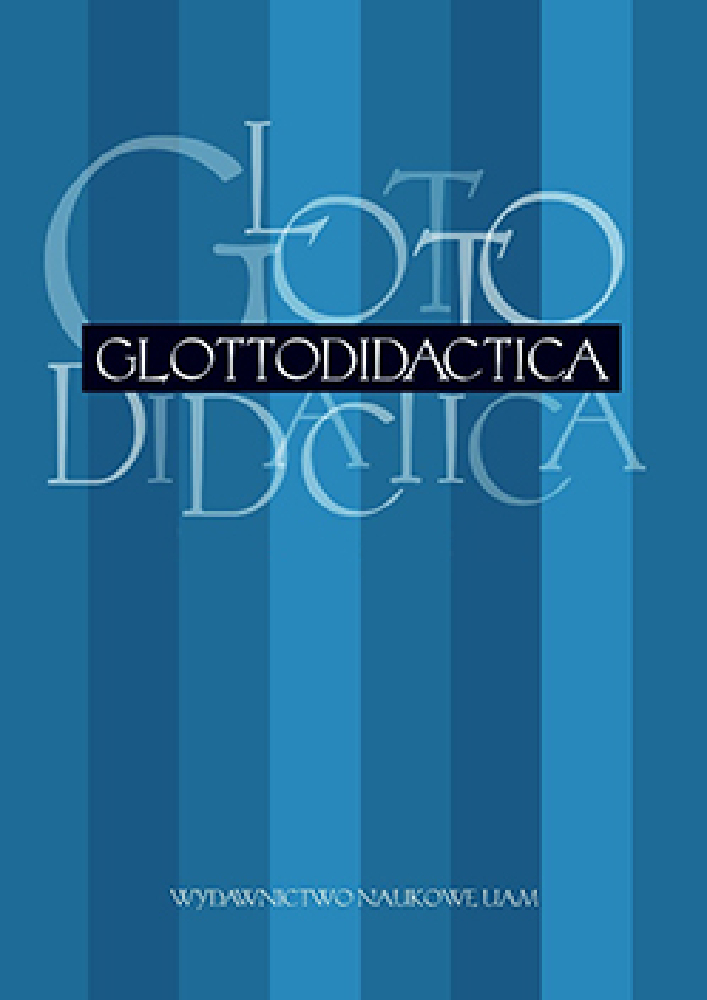Abstract
Modal verbs represent a special verb category and constitute an essential component of L2 German semantics. While Abrams and Rott (2017) suggest that German learner texts depict a 90% accuracy in the correct use of modal verbs in integrative writing tasks, the correct semantic use of the modal sollen (‘supposed to’; ‘should’) seems to pose a particular challenge (Jentges 2016), especially in an assessment context. In this corpus analysis, 1,032 L2 German assessment texts across all CEFR levels were analyzed with respect to the L2 semantic use of sollen against the backdrop of the assessment prompts. 68% of instances of all uses of sollen in A1 texts and 53% of all uses of sollen in A2 texts showed an inappropriate semantic use of sollen. The discrepancy between these results and Abrams and Rott (2017) can be attributed to the prompts used in the assessments analyzed in this paper: They do not take into consideration the semantic mismatch between the use of the modal in the prompt and its inappropriate use in the texts produced.
References
Abrams, Z. / Rott, S. (2017). Variability and variation of L2 grammar: A cross-sectional analysis of German learners’ performance on two tasks. Language Teaching Research, 21 (2), 144–165. DOI: https://doi.org/10.1177/1362168815627833
Anthonissen, L. / Mortelmans, T. (2016). German modals in second language acquisition: A con- structionist approach. Yearbook of the German Cognitive Linguistics Association, 4 (1), 9–30. DOI: https://doi.org/10.1515/gcla-2016-0004
Boss, B. (2008). Exploring the acquisition of German verb morphology by instructed learners. Australian Review of Applied Linguistics, 31 (2), 14. DOI: https://doi.org/10.2104/aral0814
Dimroth, C. (2008). Age effects on the process of L2 acquisition? Evidence from the acquisition of negation and finiteness in L2 German. Language Learning, 58 (1), 117–150. DOI: https://doi.org/10.1111/j.1467-9922.2007.00436.x
Hentschel, E. / Weydt, H. (2021). Handbuch der deutschen Grammatik. Fifth edition. Berlin / Boston: de Gruyter. DOI: https://doi.org/10.1515/9783110629651
Hyland, K. (2007). Genre pedagogy: Language, literacy and L2 writing instruction. Journal of Second Language Writing, 16 (3), 148–164. DOI: https://doi.org/10.1016/j.jslw.2007.07.005
Jentges, S. (2016). Deutsch lernt man meistens auf Niederländisch. Zielsprachengebrauch im schulischen Fremdsprachenunterricht in den Niederlanden. Glottodidactica. An International Journal of Applied Linguistics, 43 (1), 107–121. DOI: https://doi.org/10.14746/gl.2016.43.1.8
Maden-Weinberger, U. (2009). “Modality in learner German: A corpus-based study investigating modal expressions in argumentative texts by British learners of German”. Doctoral dissertation, Lancaster University.
Nikolova, M. (2018). Teaching German modal verbs through cognitive linguistics insights. German Journal Sprache Literatur Kultur, 1 (1), 3–37.
Prévost, P. (2003). Truncation and missing inflection in initial child L2 German. Studies in Second Language Acquisition, 25 (1), 65–97. DOI: https://doi.org/10.1017/S0272263103000032
Sasayama, S. / Garcia Gomez, P. / Norris, J.M. (2021). Designing efficient L2 writing assessment tasks for low-proficiency learners of English. ETS Research Report Series, 2021 (1), 1–31. DOI: https://doi.org/10.1002/ets2.12341
Scheffler, P. / Cinciała, M. (2011). Explicit grammar rules and L2 acquisition. ELT Journal, 65 (1), 13–23. DOI: https://doi.org/10.1093/elt/ccq019
Weinrich, H. (2003). Textgrammatik der deutschen Sprache. Third edition. Hildesheim: Wissenschaftliche Buchgesellschaft.
Zifonun, G. / Hoffmann, L. / Strecker, B. (eds.) (1997). Grammatik der deutschen Sprache. Berlin / New York: de Gruyter.
License
Copyright (c) 2024 Nadja Wulff, Sandra McGury

This work is licensed under a Creative Commons Attribution-NoDerivatives 4.0 International License.
Authors
Authors of texts accepted for publication in Glottodidactica are required to complete, sign and return to the Editorial team’s office the Agreement for granting a royalty-free license to works with a commitment to grant a CC sub-license.
Under the agreement, the authors of the texts published in Glottodidactica grant Adam Mickiewicz University in Poznań a non-exclusive, royalty-free license and authorize the use of Attribution-NoDerivatives 4.0 International (CC BY-ND 4.0) Creative Commons sub-license.
The authors retain the right to the free disposal of the work.
Users
Interested Internet users are entitled to use works that have been published in Glottodidactica since 2016, under the following conditions:
▪ attribution – obligation to provide, together with the distributed work, information about the authorship, title, source (link to the original work, DOI) and the license itself.
▪ no derivatives – the work must be preserved in its original form. Without the author's consent, it is not possible to distribute the modified work in the form of translations, publications, etc.
Copyrights are reserved for all texts published before 2016.
Miscellaneous
Adam Mickiewicz University in Poznań retains the property right as a whole (layout, graphic form, title, cover design, logo etc.).
Privacy statement
The names and email addresses published on this journal site will be used exclusively for the purposes declared by this journal and cannot be used for any other purpose or by any other party.





